Tolvaptan
Uses
Tolvaptan Uses Tolvaptan is used in the treatment of the syndrome of inappropriate antidiuretic hormone secretion (SIADH) and low sodium levels in the blood. It addresses low sodium levels, which can result from conditions such as heart failure, cirrhosis, and SIADH.
How it Works
How Tolvaptan works Tolvaptan is a vasopressin antagonist. It functions by blocking the effects of the hormone vasopressin in the body. This action increases urine production, reduces the amount of water in the blood, and raises the blood sodium level.
Side Effects
Common side effects of Tolvaptan include dryness in the mouth, increased thirst, dizziness, nausea, fatigue, polyuria, and diarrhea.
Expert Advice
- Tolvaptan treats low sodium levels in the blood.
- It improves urine flow without causing excessive sodium loss during urination.
- Take it at the same time every day.
- Follow the dose and duration prescribed by your doctor.
- To avoid dehydration, drink fluids as soon as you feel thirsty, but avoid alcoholic beverages.
- Do not take Tolvaptan if you:
- Are unable to urinate
- Cannot recognize when you are thirsty
- Are severely dehydrated
- You will need to be hospitalized under observation whenever you start or restart treatment with Tolvaptan.
- Inform your doctor if you notice:
- Problems with speech or muscle control
- Trouble swallowing
- Trouble moving your arms and legs
- Mood changes
- Your doctor may check your liver function before starting treatment and regularly thereafter.
- Inform your doctor if you notice:
- Yellowing of the eyes or skin
- Dark urine
- Stomach pain
Other Combinations
Related Medications
Tolvaptan 15mg
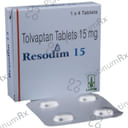
₹790.6

₹301.6
MRP ₹548.4
Tolvaptan 15mg
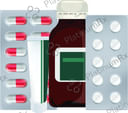
₹700

₹301.6
MRP ₹548.4
Tolvaptan 15mg
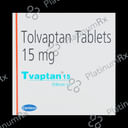
₹564.7

₹301.6
MRP ₹548.4
Tolvaptan 15mg

₹576

₹301.6
MRP ₹548.4
Tolvaptan 15mg

₹700

₹301.6
MRP ₹548.4
Tolvaptan 15mg

₹561

₹301.6
MRP ₹548.4
Tolvaptan 15mg
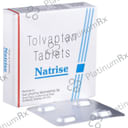
₹550.3

₹301.6
MRP ₹548.4
Tolvaptan 15mg

₹450

₹301.6
MRP ₹548.4
Tolvaptan 15mg
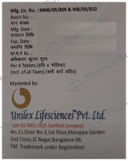
₹396

₹301.6
MRP ₹548.4
Tolvaptan 15mg
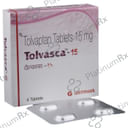
₹846.1

₹301.6
MRP ₹548.4
Tolvaptan 15mg

₹429

₹301.6
MRP ₹548.4
Tolvaptan 15mg

₹396

₹301.6
MRP ₹548.4
Tolvaptan 15mg
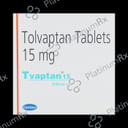
₹565

₹301.6
MRP ₹548.4
Tolvaptan 15mg

₹900

₹301.6
MRP ₹548.4
Tolvaptan 15mg
₹290.5
MRP ₹581
Tolvaptan 15mg
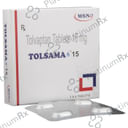
₹642.7

₹301.6
MRP ₹548.4
Tolvaptan 15mg

₹320

₹301.6
MRP ₹548.4
Tolvaptan 15mg

₹670

₹301.6
MRP ₹548.4
Tolvaptan 15mg

₹301.6
MRP ₹548.4
Tolvaptan 15mg

₹655.7
MRP ₹790
Tolvaptan 30mg

₹756

₹773.4
MRP ₹1,546.9
Tolvaptan 30mg
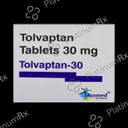
₹760

₹773.4
MRP ₹1,546.9
Tolvaptan 30mg

₹490

₹773.4
MRP ₹1,546.9
Tolvaptan 30mg

₹979

₹773.4
MRP ₹1,546.9
Tolvaptan 30mg

₹490

₹773.4
MRP ₹1,546.9